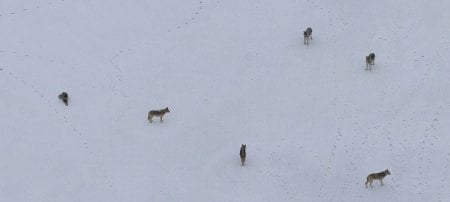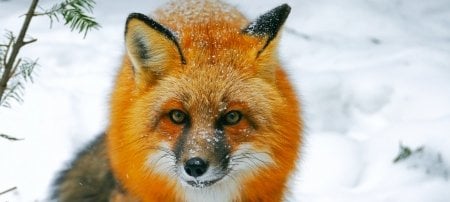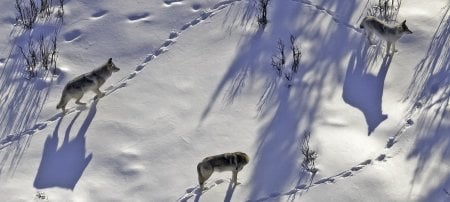A research team, including ecologists from Michigan Technological University, fitted radio collars on 20 moose this February to better understand the island’s population.
Following the reintroduction of several collared wolves from the Grand Portage Indian Reservation in Northeastern Minnesota to Isle Royale National Park last fall, a team of researchers have now collared moose at the park for the first time since 1984.

The unique collaboration between Michigan Tech, University of Minnesota College of Veterinary Medicine, National Park Service and Grand Portage Band of Lake Superior Chippewa aims to help the National Park Service assess the impacts of predator restoration to the ecosystem at the park. This effort marks the beginning of a novel effort to compare the predator-prey dynamics and health of the population of moose on Isle Royale National Park to a neighboring population of collared moose on the mainland on the Grand Portage Indian Reservation. It also represents an opportunity to evaluate the impact of restoring predation to the ecosystem.
The research supplements annual surveys led by Michigan Tech and the National Park Service in the world’s longest running predator-prey study.
"We are excited to be working on this collaborative, multi-institutional project with such a diverse group of researchers, all with different areas of expertise,” said Sarah Hoy, one of the study leads and a research assistant professor in the School of Forest Resources and Environmental Science at Michigan Tech. “We hope that collaring moose in Isle Royale, and drawing comparisons with the Minnesota moose population, will help us understand how predator-prey dynamics are influenced by parasites and moose foraging behavior and better appreciate the broader impacts for ecosystem health.”

Isle Royale Moose
Between February 13-17, 2019, a helicopter anesthesia darting team, a wildlife veterinarian and wildlife research biologists fitted 20 cow moose with GPS collars on the west and east sides of the island. The team collected biological samples from the anesthetized moose, assessing individual moose health and fitting them each with a collar. Afterward, each moose was administered a reversal drug — they all awoke and walked away in under two minutes. Since then, movement activity has been continuously monitored by GPS.
The team plans to conduct various studies with the data they have collected. They are looking to understand what impacts the health of moose populations on both the mainland and Isle Royale, how predator dynamics play a role in moose populations, how differing forest management affects the ecosystem and how climate may play a role in ecosystem health.
Lake Superior Island Ecosystem
Isle Royale hosts a simple ecosystem with one predator species, wolves, and one primary prey species, moose. This makes it an ideal system for comparative research with mainland populations of moose, such as those found on the Grand Portage Indian Reservation, which hosts a more complex ecosystem with multiple predators and multiple prey species.
Mainland populations of moose are in decline due to predation from bears and wolves on moose calves in early spring, as well as compounded effects of climate change, which includes parasitism from brainworm (transmitted by the invasion of whitetail deer into moose range) and high winter tick loads due to early snow melt. By contrast, the moose population on Isle Royale has increased rapidly in recent years. Although moose in Isle Royale also suffer from high winter tick loads, the Isle Royale population of moose does not have deer to transmit brainworm. Another crucial difference is that wolf numbers are high on the mainland (due to high deer densities), whereas the island only has a few remaining wolves predating on the moose population.

Wolf and Moose
Over the last two decades, the island’s wolf population suffered from inbreeding depression that drove the population to the brink of extinction. That circumstance is an indirect consequence of climate change, which led to fewer ice bridges forming between island and mainland, preventing wolves from moving to and from the island. The impact of the growing moose population on forest vegetation is increasingly apparent and experts are concerned that such high levels of browsing damage are impacting forest regeneration and may eventually lead to nutritional stress for moose.
The contradictory population trajectories between Isle Royale’s wolves and moose and those on the mainland create an ideal opportunity to better understand by comparison what ecological factors are impacting each population. The research also bolsters population data gathered in the Isle Royale Wolf-Moose Study, a predator-prey survey on the island now in its 61st year.
“The moose collaring effort is a perfect complement to ongoing studies at Isle Royale,” said Rolf Peterson, research scientist in the School of Forest Resources and Environmental Sciences at Michigan Tech, “filling key holes in our understanding of moose response to predation, forage abundance and climate.”
The results of the 2019 Isle Royale Winter Study will be released this spring.
Michigan Technological University is an R1 public research university founded in 1885 in Houghton, and is home to nearly 7,500 students from more than 60 countries around the world. Consistently ranked among the best universities in the country for return on investment, Michigan's flagship technological university offers more than 120 undergraduate and graduate degree programs in science and technology, engineering, computing, forestry, business, health professions, humanities, mathematics, social sciences, and the arts. The rural campus is situated just miles from Lake Superior in Michigan's Upper Peninsula, offering year-round opportunities for outdoor adventure.







Comments